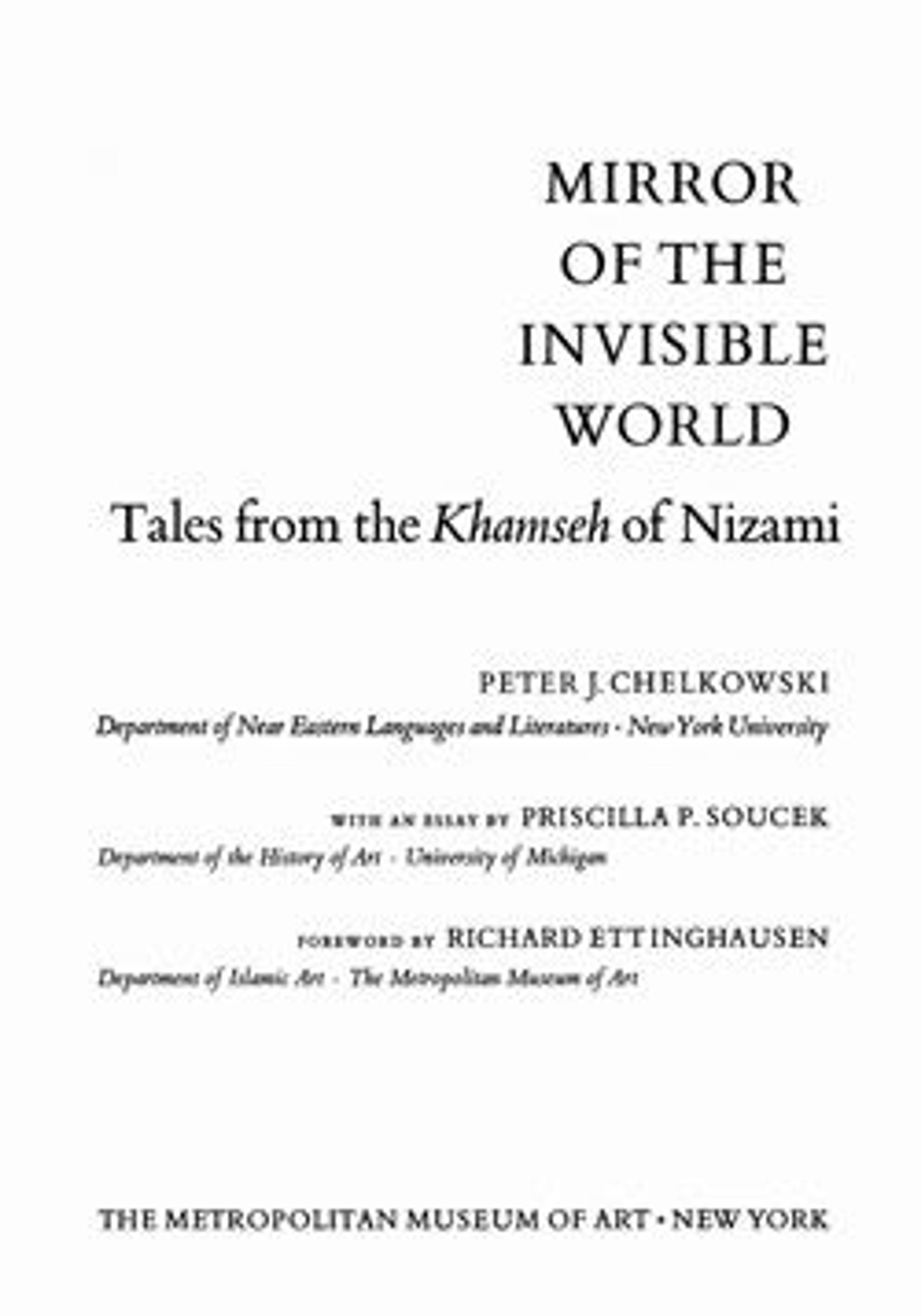"Bahram Gur in the Turquoise Palace on Wednesday", Folio 216 from a Khamsa (Quintet) of Nizami of Ganja
The fourth of the late twelfth-century Persian poet Nizami's five epic poems, later combined to form the famous Khamsa (Quintet), was the Haft Paikar, or Seven Portraits, so named from one incident in the story. It recounts the legendary history of the Sasanian king Bahram Gur, who is idealized as a great lover and hunter. The story is known also as the Seven Princesses because Bahram Gur, so the story goes, married seven beautiful princesses from the seven regions of the world, and visited each in her own pavilion on successive nights of the week. In this highly sensual but moralistic work, each princess tells a story and there are additional stories within these.
Artwork Details
- Title:"Bahram Gur in the Turquoise Palace on Wednesday", Folio 216 from a Khamsa (Quintet) of Nizami of Ganja
- Author:Nizami (present-day Azerbaijan, Ganja 1141–1209 Ganja)
- Calligrapher:Sultan Muhammad Nur (Iranian, ca. 1472–ca. 1536)
- Calligrapher:Mahmud Muzahib (Iranian, ca. 1500–1560)
- Artist:Painting by Shaikh Zada (Iranian, active 1510–1550)
- Date:dated 931 AH/1524–25 CE
- Geography:Made in present-day Afghanistan, Herat
- Medium:Ink, opaque watercolor, silver, and gold on paper
- Dimensions:Painting: H. 7 7/8 in. (20 cm)
W.4 7/8 in. (12.4 cm)
Page: H. 12 11/16 in. (32.2 cm)
W. 8 3/4 in. (22.2 cm)
Mat: H. 19 1/4 in. (48.9 cm)
W. 14 1/4 in. (36.2 cm) - Classification:Codices
- Credit Line:Gift of Alexander Smith Cochran, 1913
- Object Number:13.228.7.10
- Curatorial Department: Islamic Art
More Artwork
Research Resources
The Met provides unparalleled resources for research and welcomes an international community of students and scholars. The Met's Open Access API is where creators and researchers can connect to the The Met collection. Open Access data and public domain images are available for unrestricted commercial and noncommercial use without permission or fee.
To request images under copyright and other restrictions, please use this Image Request form.
Feedback
We continue to research and examine historical and cultural context for objects in The Met collection. If you have comments or questions about this object record, please contact us using the form below. The Museum looks forward to receiving your comments.
